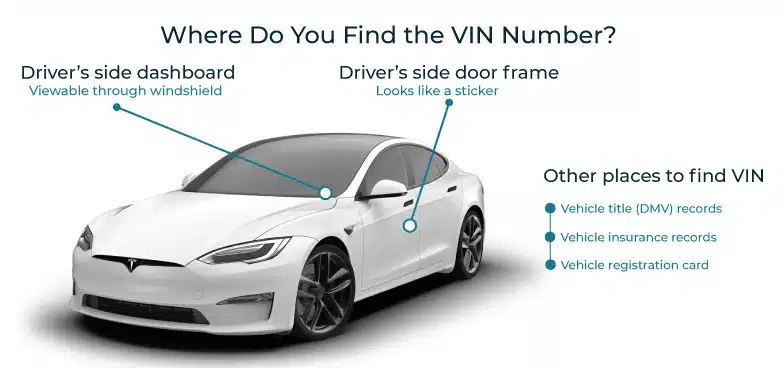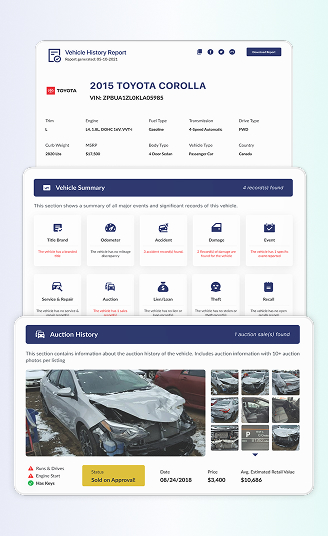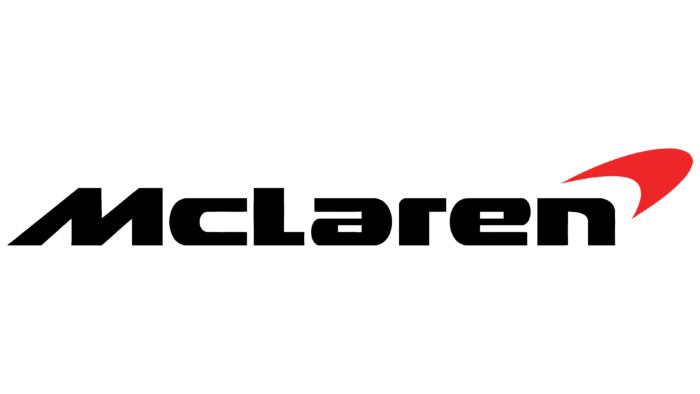
McLaren Recall Check
When you buy a McLaren, you’re not just buying a car. You’re buying a slice of British performance art on wheels. But even legends have off days. Recalls happen. Uncover hidden risks, open recalls, and dealer fixes. So you can drive with fearless confidence & protect resale value.
What is a McLaren Recall?
You love the way a McLaren feels. Razor-sharp, alive, a little bit wild. But even supercars have off days. Recalls are basically a promise: if something on a McLaren can threaten safety or break the rules, the brand (or U.S. safety regulators) will call the car back and fix it free.
A McLaren recall is an official safety action issued by McLaren or the National Highway Traffic Safety Administration (NHTSA). It identifies the defect, the risk (fire, loss of control, visibility issues, etc.), and the remedy at no cost to owners. Owner notices are mailed, and dealer repairs are tracked until completion.
Why You Should Check the McLaren Recall History?
It is essential to carry out a McLaren recall check before buying a pre-owned vehicle to guarantee its dependability and safety. Below are some reasons why you should check the recall:
Avoid Unsafe McLaren
Before you commit, review your McLaren’s recall history. It can reveal safety-critical issues (including control faults and engine problems) that aren’t obvious on a test drive. Complete the no-cost repairs, protect your resale value, and enjoy the assurance that your McLaren meets federal safety standards so every trip feels secure.
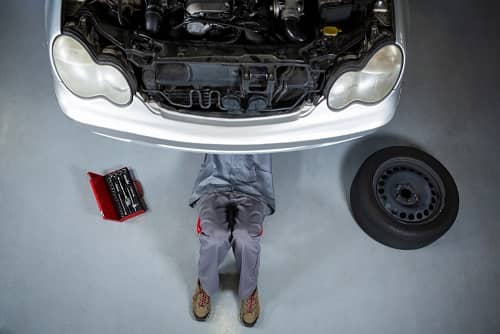
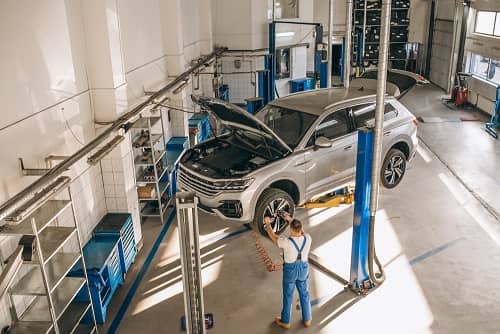
Compliance
Before you buy a McLaren, run a recall check. Manufacturers must notify owners and provide free repairs for safety defects, and confirming recall status protects you from legal headaches, supports your insurance coverage, and preserves value. A McLaren with open recalls may be out of compliance with federal standards, which can complicate ownership and resale later.
Avoid Out-of-Pocket Repair Bills
Run a McLaren recall check before you buy or sell. Safety defects are fixed free by the manufacturer, which can save you thousands compared to paying for similar repairs yourself. Giving you peace of mind.

How to Run McLaren Recalls
Discovering your McLaren recall report is just a minute away! Follow these easy steps to get the information you need quickly and effortlessly:

Locate Your McLaren VIN
You'll need your Vehicle Identification Number (VIN) ready. Find your McLaren VIN on the metal plate at the driver-side windshield corner, the driver-side doorjamb, or the compliance plate. It’s also on your title, registration, and insurance. Our service works on any type of McLaren, classic or current.


Fill in the Form
Type your VIN in the form above. No VIN handy? Use your license plate number instead.


Receive Your McLaren Recall Report
Boom! Your instant recall report is ready, detailing any open or past recalls with official data.
What is on the McLaren Recall Check?
In your Detailed Vehicle History, the McLaren recall check lists any safety recalls tied to your vehicle. Each entry shows the announcement date, the affected component, and the recommended next steps.
Explore the details below for more information:
- Date of recalls: Shows when McLaren and NHTSA issued the recall, helping you judge urgency and confirm our data is timely, accurate, and decision-ready.
- Affected Component: Clear notes on the exact McLaren part involved, so you know what’s wrong and can discuss repairs confidently with any dealer or mechanic.
- Remedy: Details the manufacturer’s free fix. You’ll see where to go and what’s covered, reducing hassle and avoiding out-of-pocket surprises.
- Next step for the affected McLaren: Confirm if your McLaren is listed under the recall and schedule repairs. With a complete Vehicle Report, you’ll also see past recalls and repair status.
A McLaren vehicle history report also includes accident records, theft records, mileage history, title check records, and many more.
Review the records for the details below:

Accident Records
See prior collisions and severity so you can spot hidden chassis/aero damage that could affect high-speed stability.
Theft Records
Check theft/recovery history. This is important for resale and for verifying parts’ originality.


Mileage History
Verify mileage across services/auctions; low, accurate miles matter on supercars.
Title Check Records
Confirm no salvage/flood/rebuilt brand that might complicate repairs or insurance on a McLaren.


Service & Maintenance Records
See the Oil changes, battery/hybrid checks (Artura), and other service maintenance records. It’s nice to see it all lined up.
Loan & Lien Information
Make sure there’s no outstanding finance snag before money changes hands.
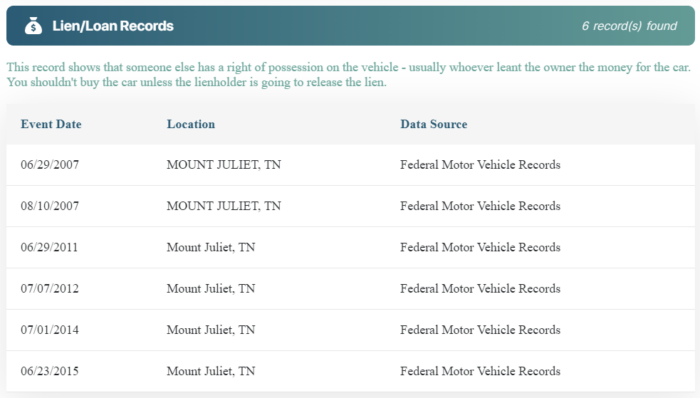
Common Issues Leading to McLaren Recall
McLaren vehicles have faced several recalls due to safety and reliability concerns. Common issues include control faults, engine problems, and other notable issues.
Get a detailed look at the factors affecting your McLaren recall below.
Control Faults
Brake-System Routing & Stability
Some McLarens, including 600LT, 720S, Artura, GT, and GTS, were checked for incorrectly routed hydraulic brake lines and related ABS/ESP concerns. Worst-case? Rear-wheel lockup and loss of control. Dealers inspect routing, replace lines/hardware, and validate ESP function. Owner letters planned for April 17, 2025. This recall was under the NHTSA Recall ID: 24V-901
Missing Banjo Bolt Hole
Under the NHTSA ID: SRC 00 C 001, in certain 2019–2020 720S, 2019 600LT, and 2020 570S and GT vehicles, a bolt in the brake assembly might be missing a small hole that supplies brake fluid to the caliper. Without this hole, braking power at one wheel can be lost completely. The problem is fixed by replacing the defective bolts with new ones that meet safety standards.
Overall risk: Both these problems could make braking less effective or uneven. A major concern for high-performance cars like McLaren.
Engine and Fuel System Issues
Fuel-tank ventilation & corrosion
In some 570GT 2016–2019, 720S 2016–2020, Senna 2019–2020, a foam pad beneath the tank can trap moisture, leading to corrosion and leaks, with an elevated fire risk. Dealers remove/replace the foam and inspect or replace fuel tanks showing corrosion. If you ever smell fuel after parking, this is the one to check first.
Loose Fuel Pipe Nuts
Under the NHTSA ID: 22V908000. Some 2023 McLaren Artura vehicles were recalled because the nuts on the high-pressure fuel pipe could loosen. A loose connection can leak fuel, again creating a fire hazard. Dealers tighten or replace the fittings as part of the free recall repair.
Coolant Leak
In certain 2019–2020 McLaren 600LT Coupe and Spider models, a poorly sealed joint in the cooling system can cause coolant to leak into the engine bay. If the coolant contacts hot engine parts, it can start a fire. The repair involves resealing or replacing the affected joints.
Engine-harness defect (2018–2019 McLaren Senna)
The 2018–2019 McLaren Senna had an engine harness that could rub against a metal heat shield. Over time, this friction could damage the wires, causing a sudden loss of power or a complete engine stall. McLaren fixed this by rerouting and securing the harness away from metal parts.
Other Notable Issues
Rear-cabin window adhesion
Under the NHTSA ID: 24V901000, some McLaren 765LTs, built between August 3, 2020, and May 19, 2021, were recalled.
The polycarbonate rear window may detach at high speed if the bonding adhesive fails—yikes. Risk is obvious: debris separation and visibility issues for you and anyone behind. The remedy is replacing/rebonding the panel with the updated process; interim guidance applies until parts/slots are ready. No injuries reported, but definitely not something you want at 150 mph
Hood/bonnet interference
Under the 24V661000 campaign, certain 2020–2023 McLaren GT models were recalled because the manual hood release cable was too tight. This could cause the hood to open unexpectedly while driving and block the driver’s view. Dealers replace or adjust the latch cable to prevent it from happening again.
Airbag Connection Fault
Under the 22V105000 NHTSA campaign, some 2019–2021 McLaren GT vehicles, the driver’s airbag may have been connected incorrectly to the restraint control module. This can stop the airbag from deploying in a crash, increasing injury risk. Dealers fix this by properly reconnecting and testing the airbag system.
Suspension Bolt Issue
In 2022, McLaren launched a service campaign for over-torqued suspension bolts found in 765LT and Elva models. These bolts could weaken over time, affecting handling and safety. Technicians inspected and replaced them as needed at no cost to owners.
Understanding the McLaren Recall Process
When safety complaints reach the NHTSA, they don’t just sit there; they get reviewed carefully. If a real defect is confirmed, McLaren must issue a recall under NHTSA supervision. You can then check your McLaren by VIN and schedule a free repair at any authorized dealer.
Discover the full breakdown of the McLaren Recall Process below:
Report the Problem
If you notice something unsafe about your McLaren, maybe a strange noise, faulty brakes, or a warning light, you can report it to NHTSA. Each report is logged, compared with others, and helps start official investigations.
Investigation
Once a complaint is submitted, the NHTSA follows a multi-step process to determine whether a recall is necessary.
- Screening: NHTSA’s Office of Defects Investigation reviews patterns in complaints and other data.
- Analysis: Experts study the reports in detail to decide if a safety defect exists.
- Investigate the Issues: Inspecting the vehicles and testing the defect to confirm the risk.
- Recall Management: NHTSA tracks how quickly McLaren fixes the issue and how many owners complete the repair.
Recalls
If a safety risk is proven, McLaren must notify all owners, provide a free repair or replacement, and keep records until every affected car is fixed. Simple, structured, and always focused on safety
How McLaren Vehicle Recalls Are Handled
When a recall is announced, there’s a clear process to make sure every affected McLaren is repaired safely and correctly. Three main groups are involved: McLaren, the NHTSA, and you, the vehicle owner. Each plays an important role in keeping the recall smooth, fair, and effective.
Automaker Role
Once a safety issue is confirmed, McLaren takes responsibility for finding the cause and fixing it. Their engineers test the affected part or system to understand what went wrong.
After that, McLaren works closely with the NHTSA to plan a proper solution. The company then creates an official recall campaign, which includes instructions for dealers, a schedule for repairs, and notifications for owners.
When the plan is approved, McLaren sends letters or emails to every affected owner, usually within 60 days. The notice explains:
- What is the defect?
- Which models are affected
- The risks involved if the defect is ignored
- The steps to get the free repair
All recall repairs are done by trained McLaren technicians at authorized service centers, using official parts only. McLaren also keeps detailed records of completed repairs to report back to NHTSA.
NHTSA’s Role
The NHTSA is the government agency that oversees all vehicle recalls in the United States. Its main job is to make sure car makers, including McLaren, follow safety laws.
When McLaren issues a recall, NHTSA reviews the entire plan and ensures that owners are properly informed. The agency also checks that the repairs are done quickly and effectively.
In addition, NHTSA monitors the recall completion rate. Which means how many of the affected cars have actually been repaired. If McLaren fails to notify owners correctly or delays fixes, NHTSA can take enforcement action or require updates to the recall process.
Your Role as the Vehicle Owner
As a McLaren owner, your part is simple but very important. When you receive a recall notice, don’t ignore it! Even if your car seems fine. A small issue today could become dangerous later, especially in high-performance cars like McLaren.
Here’s what to do:
- Check your VIN – You can find it on your registration, door jamb, or windshield, and verify it on NHTSA’s or McLaren’s recall site.
- Contact a McLaren dealer – Schedule an appointment for the free inspection or repair.
- Keep proof – After the fix, ask for a copy of the service record showing that the recall work was done. This helps protect your car’s value in the future.
McLaren repairs and recalls at no cost, and some dealers may even offer courtesy services such as towing or a loaner vehicle during the repair.
Get McLaren Window Sticker by VIN
Before you buy or sell a McLaren, get the original window sticker to see what it truly came with. From the engine configuration and color combination to optional equipment and safety features, this label reveals every factory detail.
It helps confirm authenticity, compare trims, and spot missing features! All within seconds. It’s quick, detailed, and gives you the clarity every McLaren owner deserves.

Why Use Detailed Vehicle History to Check McLaren Recall?
Detailed Vehicle History combines verified recall data with deep insights into your McLaren’s life. From open recalls and service records to accident records, theft records, mileage history, title check records, and many more.
Our reports are built for precision, just like McLaren itself. With every VIN check, you get accurate, connected data you can trust before buying, selling, or driving. Stay informed, stay safe, and keep your McLaren’s performance reputation intact.
Recall Check For Others Manufacturers
FAQ about McLaren Recalls Check
Which McLaren models have had recent recalls?
As of September 2025, the McLaren models that have had recent recalls are:
- 600LT, 720S, Artura, GT, GTS (brake-line/ESP checks),
- 765LT (rear-window adhesion),
- 570GT/720S/Senna (fuel-tank pad corrosion),
- Senna (engine harness).
Are McLaren recall repairs always free? Even out of warranty?
Yes. Safety-recall remedies are free at authorized retailers, regardless of warranty status.
Can I drive my McLaren with an open recall?
Usually yes. Unless the notice or dealer says “do not drive.” Some issues (e.g., brake routing or potential fire risk) or limit high-speed/track use. Recall campaigns deserve prompt attention; schedule it ASAP.
Do McLaren recalls expire?
Safety recalls don’t “expire,” but parts availability and campaign logistics can vary on older cars. Check your VIN periodically and keep your contact info current.
How long does a McLaren recall repair take?
Software updates can be quick; however, inspections/hardware swaps take longer. Complex fixes (like tank replacement) can stretch to a day or more. Book ahead.
What if the McLaren parts aren’t available yet?
Your VIN will show “remedy not yet available” when a fix is pending. Ask the retailer to place you on a waitlist and re-check weekly until parts land.
Will a recall hurt my McLaren’s resale value?
An unfixed recall can scare buyers. A completed recall, documented properly, usually restores confidence and value. Keep your service sheet.
Can I get reimbursed if I already paid for the repair before the McLaren recall?
Often, yes. If your earlier repair matches the recall defect, keep invoices and file for reimbursement per the owner’s letter instructions.
How much does it cost to service or maintain a McLaren?
Annual servicing often runs $2,000–$3,500, depending on model, use, and dealer rates. Track use and fluid changes can add more.
What if my McLaren shows symptoms, but no recall appears for my VIN?
Not every issue becomes a recall. There may be service campaigns or technical bulletins instead. Have a dealer check your VIN and symptoms.
Can multiple McLaren recalls be handled in one visit?
Usually. List every open campaign when booking so the retailer can order parts and line up tech time.
Do McLaren recalls include towing or a loaner?
The fix is free; towing/loaners depend on the campaign and dealer policy. Ask when you schedule.
Has the McLaren 765LT or 720S been recalled recently?
Yes. NHTSA 24V-901 recalled certain 2021 765LT Coupes for rear-cabin window bonding that could allow detachment; owners receive a free fix.
Can classic or imported McLaren models be part of a recall?
Classic McLarens can be in recall campaigns, even if they are rare. The big questions are:
- Was that exact model certified for the U.S. market?
- Is the recall still eligible for a free remedy? If your car is older, the campaign may remain on record, but the fix might be paid or “parts no longer available.”
Imported examples: if your car was built to non-US specs, the recall obligations depend on how it was legalized (Show/Display, 25-year rule, or full federalization). A McLaren dealer can still check your VIN and note whether there’s a U.S.-equivalent recall or a previously completed fix.
Always check your McLaren Recall records. We can also decode classic McLarens with not only recall info, but also McLaren history records like accident records, theft records,
mileage history, title check records, and many more. All in one place for a more convenient way!
Do McLarens have a lot of recalls or problems?
No, McLaren builds low-volume cars, so the number of recalls is smaller than mass brands. But the issues can be serious (fuel leaks, brake routing, rear window bonding) and must be fixed. Always run a McLaren recall check to verify.
Why do McLaren cars get recalled?
Many supercar recalls are precautionary; also, NHTSA’s process prioritizes risk, not volume. That’s why you’ll see focused, model-specific campaigns.
Does McLaren’s F1 technology influence how street-car recalls are handled?
No, the process is legal and federal. NHTSA governs defect investigations and recalls; F1 tech doesn’t change recall rules or owner rights.
Are McLaren road-car recalls related to components derived from F1 (carbon brakes, aero, software)?
Sometimes recalls involve aero/glazing or brake system routing (e.g., 765LT rear window, 25V-216 brake lines), but they’re not labeled “F1-derived”; they’re just safety defects.
If my McLaren has a recall, can I still attend track days or driver-experience events?
Check the letter. Some recalls advise restricted use; the 765LT window recall warned against high-speed/track use until repaired. When in doubt, fix first.
What’s the difference between FIA safety rules (F1) and NHTSA recalls for my McLaren?
FIA rules cover racing conduct, equipment, and circuits. Meanwhile, NHTSA covers defect investigations and owner notifications for street vehicles.
Could a recall limit VMAX runs or overboost modes during manufacturer events?
Yes, depending on the defect. The 765LT recall recommended avoiding certain high-speed use until repaired. Organizers can impose limits for safety.
Do recalls impact track-day insurance or eligibility at McLaren-hosted F1 weekend experiences?
McLaren events can set safety conditions. If a recall affects brakes, fuel, or glazing, they may require the fix before participation. (Check event T&Cs.)

